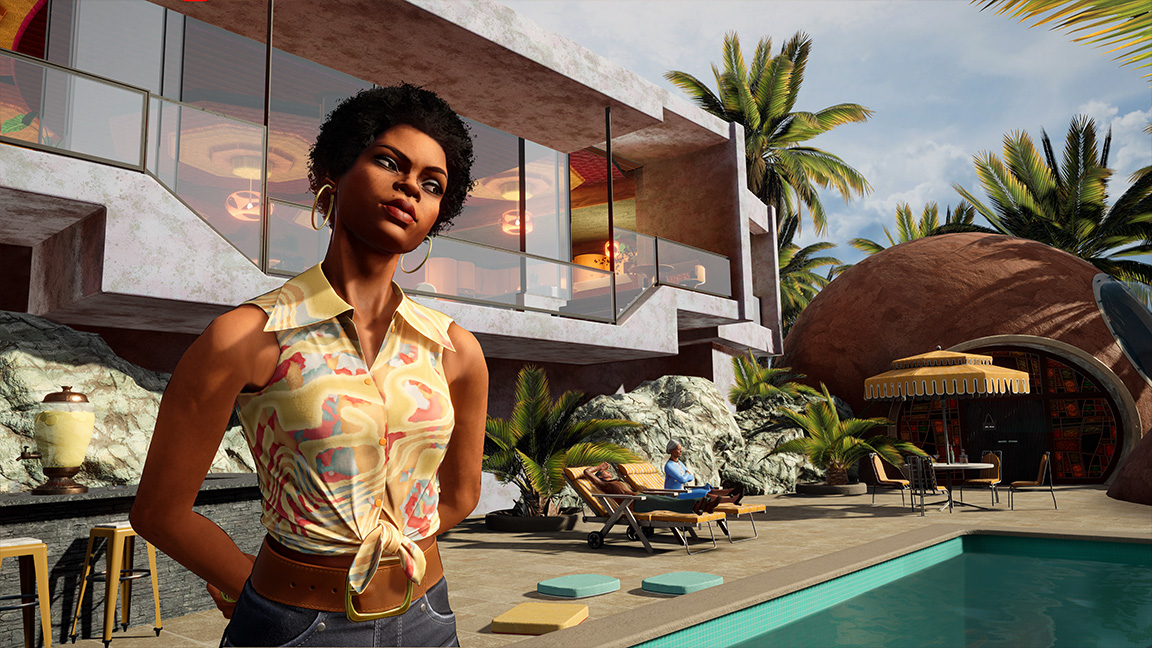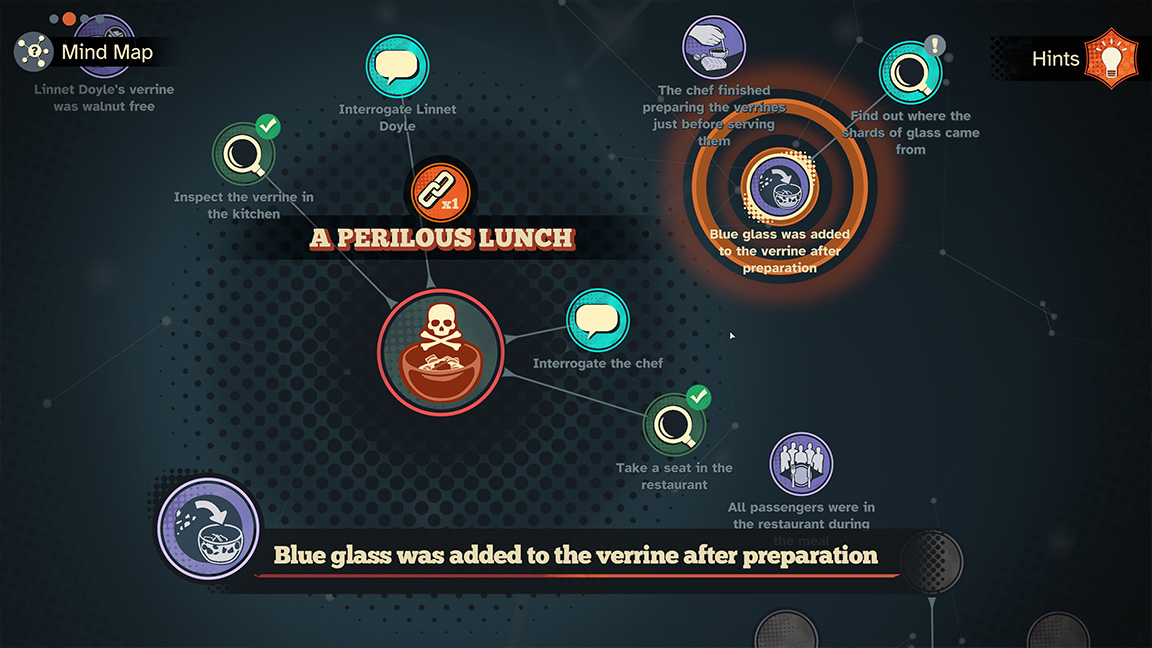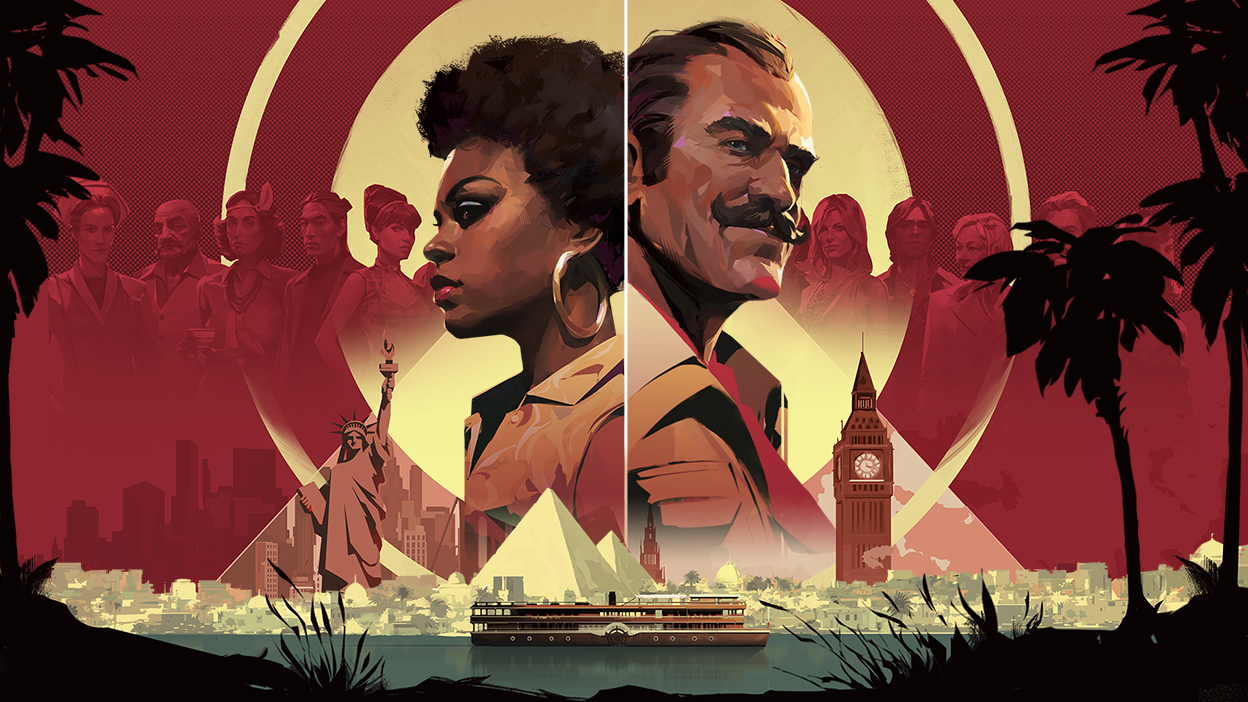
Agatha Christie’s Death on the Nile has been retold countless times, yet this Nintendo Switch version manages to make it feel alive again. Microids’ latest Poirot mystery is more than a retread of the famous story; it’s a thoughtful re-engineering of detective play, mixing classic puzzle solving with fresh storytelling ideas and a splash of 1970s flair.
Rather than relying solely on the famously composed Hercule Poirot, the game pairs him with a new lead, Jane Royce. It’s a smart move. Poirot brings his usual clinical logic to the case, while Royce carries the emotional weight, driven by the loss of a close friend. Swapping between them changes not only what you see but how you think.
Poirot’s scenes feel like a chess match, precise, deliberate, and methodical. Royce’s moments are more personal and raw, her investigation guided by grief as much as intuition. At first, the dual structure can be disorienting, but as the story finds its rhythm, the pieces lock into place beautifully. By the time the long-anticipated murder finally occurs late in the story, it feels genuinely earned. The build-up makes the reveal satisfying in a way few mystery games achieve.

A smarter kind of sleuthing
The core of Death on the Nile remains familiar: examine rooms, question suspects, and join the dots. But it’s the pacing and presentation that elevate it – sure, it can feel a little disjointed, and the lack of, well… murder early on is a little off-putting. But getting there is made more comfortable with a redesigned interface that keeps investigations clear and focused, while the Mind Map system, a returning tool for linking clues, is streamlined and easy to use. It lets you spend more time thinking and less time clicking through menus.
The puzzles themselves are inventive without being obscure. A sequence using beams of light inside an ancient temple stands out; it's the kind of puzzle that makes you stop, smile, and admire the craft behind it. Optional side investigations let you flesh out character profiles, giving obsessive players extra threads to pull.
The new eavesdropping feature is another highlight. Finding the perfect spot to overhear a hushed exchange feels perfectly in step with Christie’s world of subtle glances and whispered motives. It’s a simple mechanic, but it adds texture and tension in all the right places.

1970s style and substance
Visually, this is the most confident Agatha Christie adaptation yet. The developer trades the familiar 1930s setting for a stylised 1970s Egypt, full of burnt-orange sunsets, geometric interiors, and sharply dressed suspects (I explored this more in my interview with the Death on the Nile art director). It’s bold without being brash, a confident reimagining that gives the story its own personality.
The bold colour and geometric design of the art direction fit well on Switch, clean, simple and clear. Environments are rich in colour and detail, and while character animation can feel a little stiff, the atmosphere carries it through. The world feels tangible, sun-baked and buzzing with hidden agendas. It’s a joy to explore both on a big screen and in handheld mode.

This isn’t a game that rushes you. You’ll spend long moments cross-checking notes, replaying conversations in your head, and following your gut through contradictions. That slow-burn pace won’t be for everyone, and the process doesn't really move on from preview detective games from Microds. Despite the change in pacing and art style, it can feel business as usual. But it’s exactly what makes Death on the Nile so absorbing and 'cosy' for a crime game.
If there’s a drawback, it’s that the dual-timeline structure sometimes interrupts momentum. Just as you’re fully invested in one line of inquiry, the perspective might shift to the other. But once you’re comfortable with the rhythm, it becomes part of the storytelling charm.
The dual-protagonist approach adds new emotional range, the puzzles are clever without frustration, and the 70s aesthetic gives the whole experience a confident identity of its own. But, while Agatha Christie – Death on the Nile may stretch the Microids formula when it comes to pacing and art, it rarely takes risks with its puzzles, deductions, and core gameplay.









